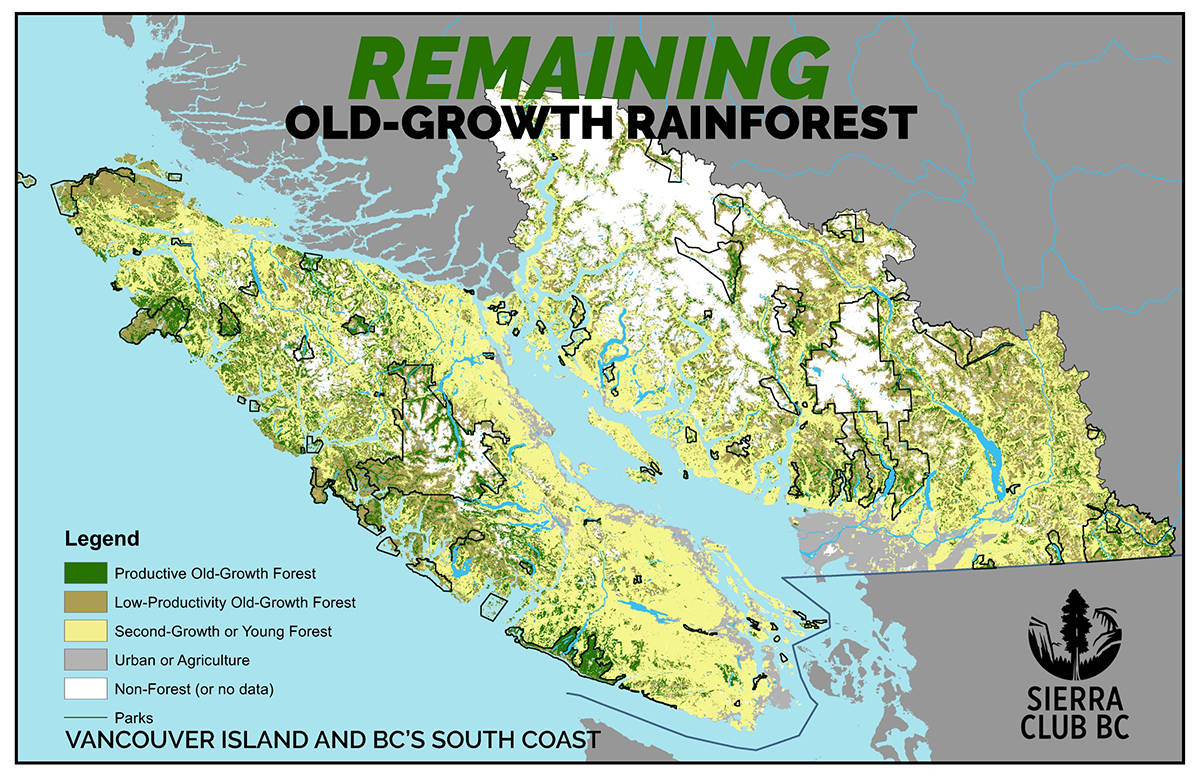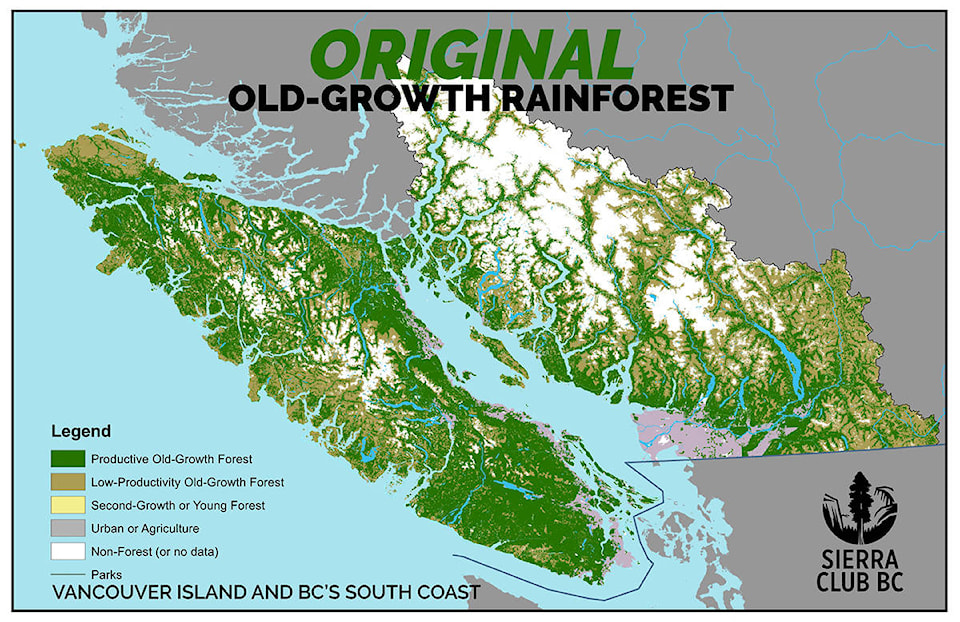Dear Editor,
In response to “Debate on Vancouver Island’s old growth forests must be based on facts, not emotions”-
Understanding the old-growth crisis on Vancouver Island must be based on meaningful facts
Sierra Club BC and Wilderness Committee agree with the authors of a recent opinion article that discussion of the old-growth crisis on Vancouver Island must be based on facts, but those facts must be meaningful. Despite claims to factual accuracy, however, the information provided in the article is superficial, partially incorrect (860,000 hectares of old-growth on 2.4 million hectares of Crown land is 36, not 46 per cent) and ignores the ecological crisis unfolding on Vancouver Island.
Coastal temperate rainforests are globally rare. They have never covered more than about 0.5 per cent of the world’s land mass. The majority of the ancient trees has long been logged and the remaining old-growth of Vancouver Island forms part of the last intact tracts of these forests on the planet. But we continue to log the primary forest at a rate three times faster than tropical countries, replacing intact, species and carbon-rich old-growth with ecologically impoverished, even-aged young forests (Loss of primary forest 1990-2015 in the tropics was 10 percent, on Vancouver Island 30 percent).
For many years, the provincial government failed to provide meaningful forest data. Sierra Club BC has been providing this information to the public using hard to find government data, forest cover and satellite images. We are sharing easily accessible maps and data, analysis of how much old-growth is being clearcut on Vancouver Island, estimates of carbon emissions as a result of destructive logging practices, and what ecosystems and landscapes are at the highest ecological risk and have the greatest gaps in conservation. We hope that the new BC government will quickly ensure even better, complete and detailed information for the whole Island, Tree Farm Licences, public and private land will be shared with the public.
To interpret this information, we are guided by recommendations made by the Coast Information Team in the Ecosystem-Based Management Handbook for coastal temperate rainforest ecosystems, endorsed by all parties involved in the Great Bear Rainforest Agreements. One of the most important considerations of the Handbook is that to maintain ecological integrity for coastal rainforests we must consider conservation levels of individual ecosystems rather than all forests together. Low ecological risk requires setting aside 70 per cent of the natural amount of old-growth by ecosystem at the regional level, and no less than 30 per cent of the forest (the high risk threshold) by ecosystem at landscape level (usually units of 50,000 to 100,000 hectares).
Thus to assess the ecological risk requires taking a closer look at the original extent of Vancouver Island’s old-growth ecosystems. There are many different ecosystems with different leading tree species, site conditions, at lower and higher elevations. Some ecosystems grow smaller trees; species that depend on this type of old-growth are generally not at risk because these forests are usually not of interest for logging and a higher percentage is protected. Other ecosystems grow massive, tall trees, and have been targeted by industry for a long time.
The remaining old-growth for these ecosystems are generally reduced to single digits of their original old-growth extent—e.g. 2.5 per cent for dry coastal western hemlock and 1 per cent for Coastal Douglas Fir—and only a small percentage is protected.
Sierra Club BC developed a Google Earth file to take a closer look at the most endangered rainforests, considering good and medium productivity ecosystems. We found that almost half of the landscape units on Vancouver Island and the South Coast now have less than 30 per cent of relatively productive old-growth remaining. Our data also shows that much of the protected forest on Vancouver Island is low productivity, whereas only about 8 per cent of the good-productivity old-growth is off-limits to logging.
The authors of the opinion article use the fraction protected of the fraction remaining to point out how well we are doing, concluding that 62 per cent of the remaining old-growth is protected. This is a terrible approach.
Following this logic, we could continue to clearcut the last remaining unprotected old-growth and increase the percentage of protected old-growth at the same time without taking any action for highly endangered ecosystems.
With so many ecosystems at extremely high ecological risk of species extirpation on Vancouver Island it is very important to use a definition of old-growth that captures all the remaining old forests with old-growth characteristics to make informed decisions. This is why Sierra Club BC is including forests older than 140 years in our Vancouver Island maps and data. The data looks even more terrifying when including only stands 250 years and older. Protection of these oldest stands is particularly urgent.
We are very concerned about the impacts of the old-growth crisis on Vancouver Island’s ecosystems and communities and believe that urgent action is needed to ensure ecologically intact forest landscapes for wildlife, clean air and water, a livable climate, respect for First Nations rights and values, and a diverse economy including tourism and long-term forestry jobs.
Jens Wieting, Forest and Climate Campaigner, Sierra Club BC

